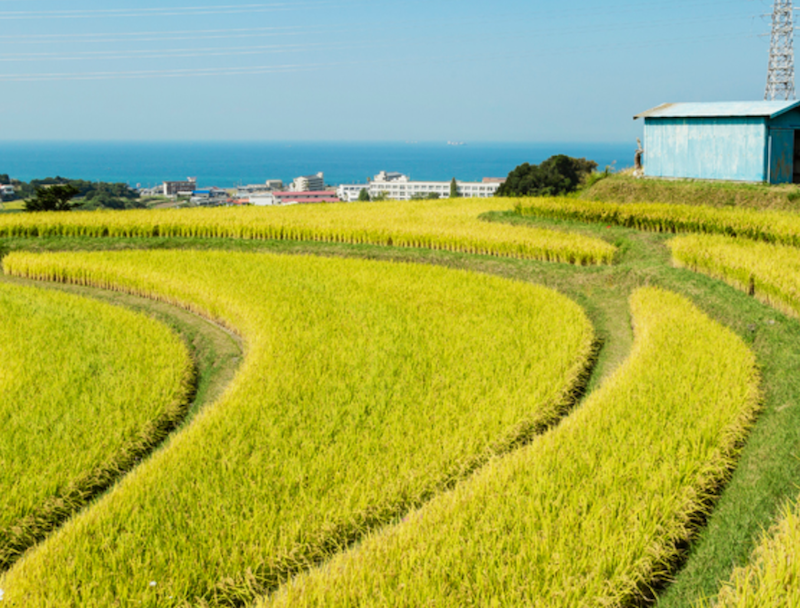
Awaji Island’s Unique Collaboration of Rice, Onions, and Livestock
It has been reported that this year’s rice shortage and high prices were already predicted. This is due to an increase in rice consumption over the past three years, including by foreign tourists. Recently, rice exports have also increased due to a renewed appreciation for the quality and characteristics of Japanese rice. In the 1960s, annual rice consumption per person was approximately 120 kg. 45 years later, in 2005, this figure had fallen to 61 kg—nearly half. Consequently, the number of paddy fields has continued to decline. The rice production reduction policy, implemented to maintain rice prices, allowed farmers to receive subsidies without producing rice. Walking through the forests on Awaji Island’s mountains, remnants of neglected paddy fields due to this policy are overgrown with grass. Furthermore, the declining birthrate and aging population, which has made it difficult to continue rice farming, also contributes to the decline in rice production. Given these circumstances, it is worrying whether it is possible to suddenly increase rice production. While the rice production reduction policy was abolished in 2018, this year there has been discussion of increasing production.

Fig. Decrease of rice consumption by Japanese since at its peak in 1970’s

Fig. Ayuhara rice Kinuhikari produced in Ayuhara area in Awaji is known delicious.
While a certain degree of revival of rice farming is essential for revitalizing rural areas, this will be difficult unless agriculture itself can economically guarantee producers’ livelihoods. If the profit earned from producing one car is 3 million yen, it is difficult for those working in cities to imagine how much land would be needed to cultivate and how much effort would be required to earn that much through rice farming. Cultivating a paddy field of approximately 1000 tsubo (10 ares) would bring in a profit of 3 million yen, but expenses of 3.02 million yen would mean that rice production alone would be insufficient to make a living. Many farmers make a profit by growing vegetables and fruit, or by working part-time at a company or factory.
Japanese people not directly involved in agriculture need to understand this situation and support rice farming and agriculture to protect themselves and other Japanese people. Here, I would like to take a brief look at the characteristics of Awaji agriculture, where rice and onion farming now account for a large portion of income on Awaji Island. On the island of Awaji, rice is grown in the Mihara Plain in the south and in the Ayuhara region in the central mountains. Ayuhara’s rice is particularly renowned for its delicious flavor. According to the JA Hinode Agricultural Cooperative, Kinuhikari, a modified version of Koshihikari, is the main variety produced. On Awaji Island, double cropping is common, with onions grown in paddy fields during the winter and spring when rice cannot be grown. Triple cropping is also practiced, with lettuce grown between rice and onion plantings.
Onion production is said to have first begun around 1900 during the Meiji period. Later, the “Awaji Chukoko” variety, suitable for planting in the fall and harvesting in the spring after wintering, was developed through selective breeding. This variety is cultivated throughout Japan due to its excellent texture. Three varieties with different maturity periods—early, mid-season, and late—have also been developed and continue to be used today. After harvest, Minami Awaji exposes the onions to the wind that descends from Mt. Yuzuruha at the southern tip of the island, which enhances their sweetness and increases the amount of the active ingredient, quercetin, by about 1.6 times. The onion sheds used to expose them to the wind are a distinctive feature of Minami Awaji’s landscape.
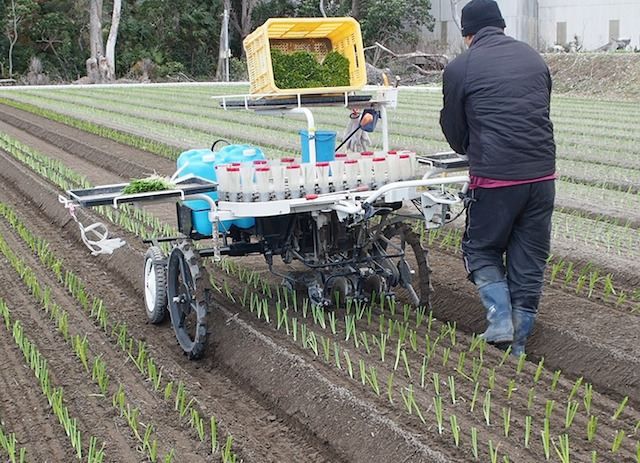
Fig. Onion Awaji Chukoko planting in Nov. with cow manure before planting
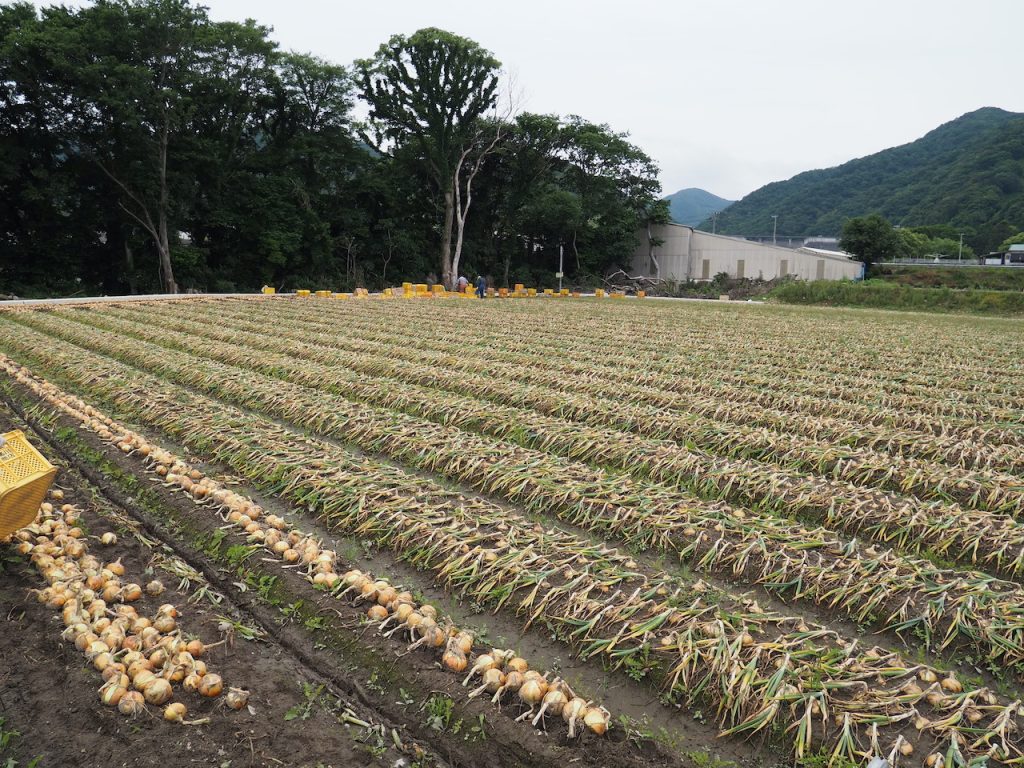
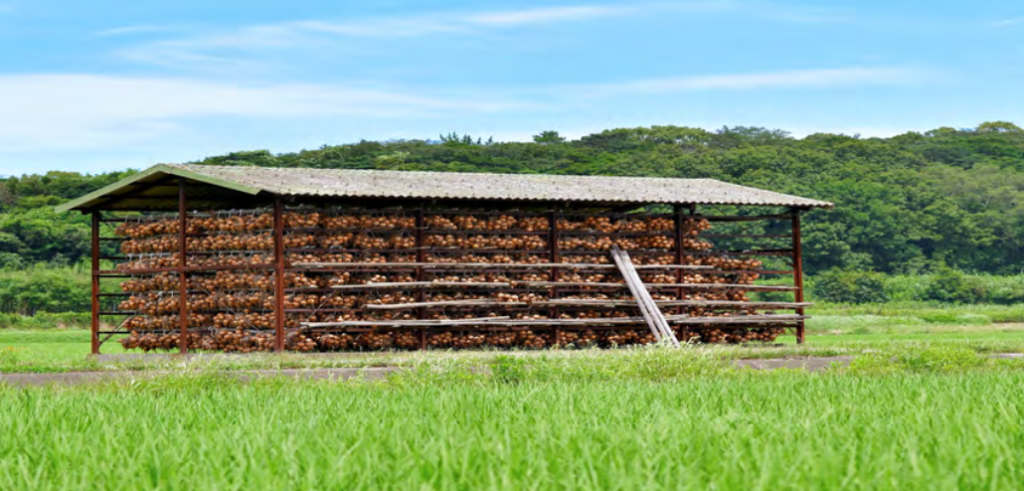
Fig. A typical onion cottage in south awaji area (ref. Japanese MInistry Agriculture, Forestry, and Fisheries)
Lettuce cultivation also became popular after rice cultivation, resulting in three consecutive crops in the same rice paddies. Does this continuous cultivation ensure sufficient nutrients for the paddies? To replenish these nutrients, cow manure from the grazing land that has flourished in Minami Awaji since the Meiji era is spread on the paddies as an important source of nutrients. Cow manure, which has been a nutrient source for rice cultivation since the beginning of the Meiji era, is also essential for onion cultivation. This combination of rice cultivation, onion farming, and livestock farming is a unique agricultural practice that has been registered as a Japanese agricultural heritage site (from the Agriculture, Forestry and Fisheries Agency website).

Fig. Cow feeding and Cow manure is an important nutrient source for rice and onion production.
When considering Awaji agriculture, water is of utmost importance. Several rivers flow through Minami Awaji’s Mt. Yuzuruha. Within this valley lies a long, dammed river, forming a pond called Taniike. This is the first of a series of reservoirs. Further downstream, near cultivated land, lies another reservoir called Saraike. The release of water from these reservoirs into the cultivated land is managed, and the managers are called Tazu (rice field managers). There is a community that manages water use among themselves.

Fig. Awaji’s most popular landscape of water supply pond called Tameike.
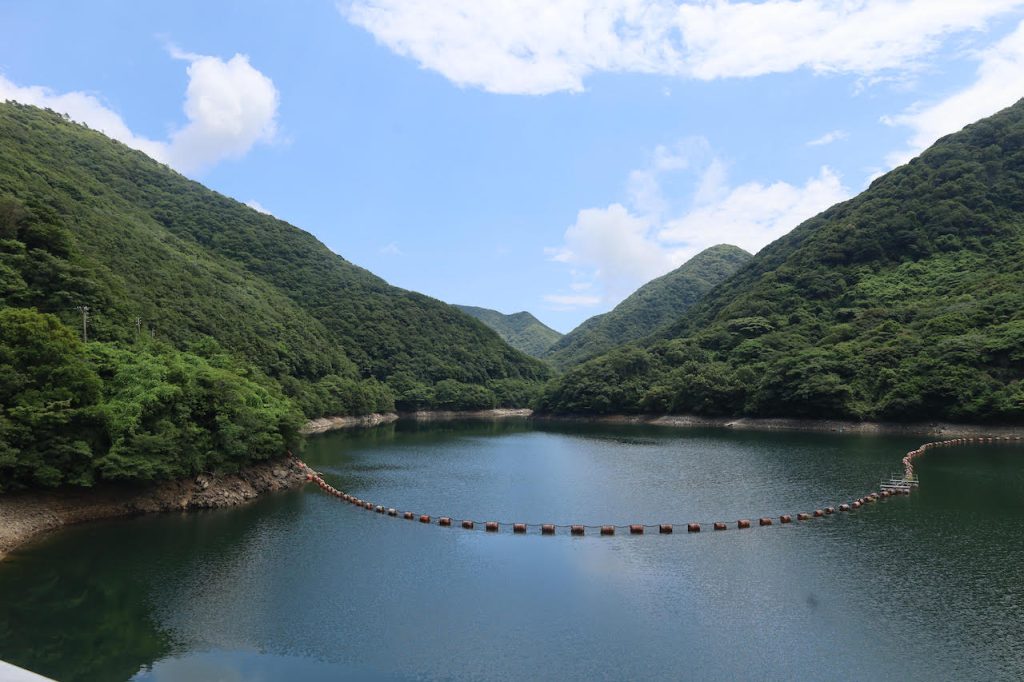
Fig. A pond for water supply in Yuzuruha mountain of Soth Awaji area (Taniike)
The characteristics of Awaji agriculture mentioned above have been recognized as a Japanese Agricultural Heritage Site by the Ministry of Agriculture, Forestry and Fisheries, and a detailed description is provided, so please refer to it (South Awaji’s Rice, Onion, and Livestock Production Circulation System, Japanese Agricultural Heritage Site, Ministry of Agriculture, Forestry and Fisheries). This heritage site not only covers agriculture, but also the natural environment and culture that underpin it. Looking at the working habits of Awaji Islanders, we notice that even those over 70 years old, roughly half of them make a living through agriculture or fisheries. This seems deeply connected to the island’s agricultural environment, and it is an excellent environment in which even the elderly can work. we hope that Awaji Island’s unique agricultural practices, which we have mentioned so far, will continue to be maintained in the future, and that in addition to the excellent onions, we will be able to support rice production as well.
